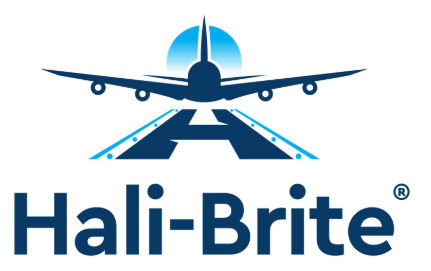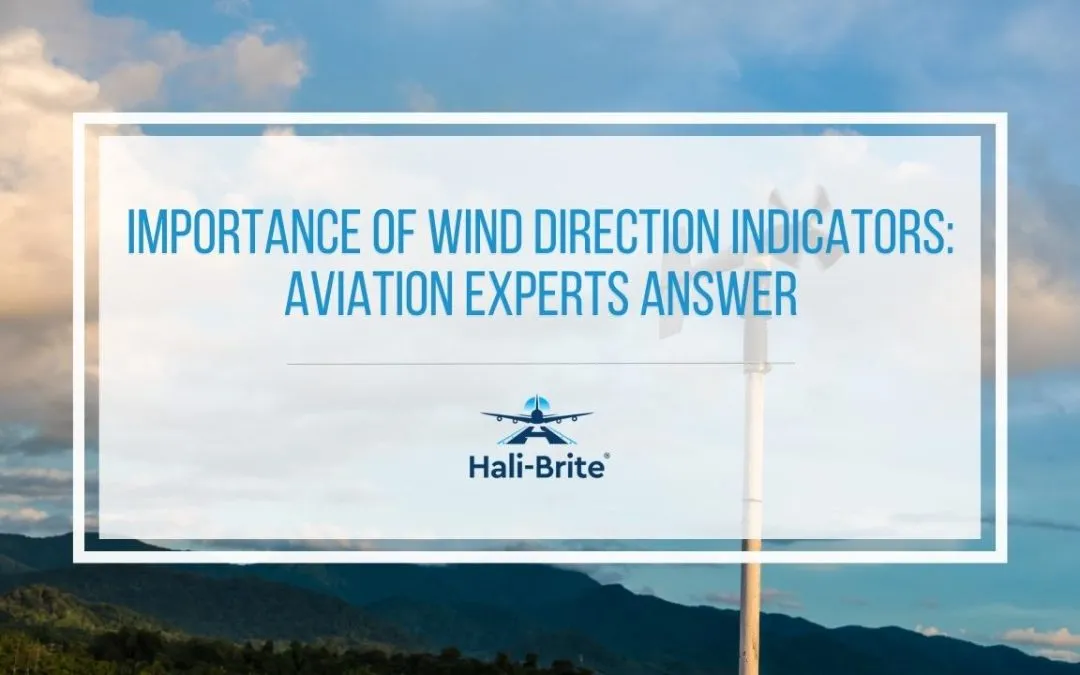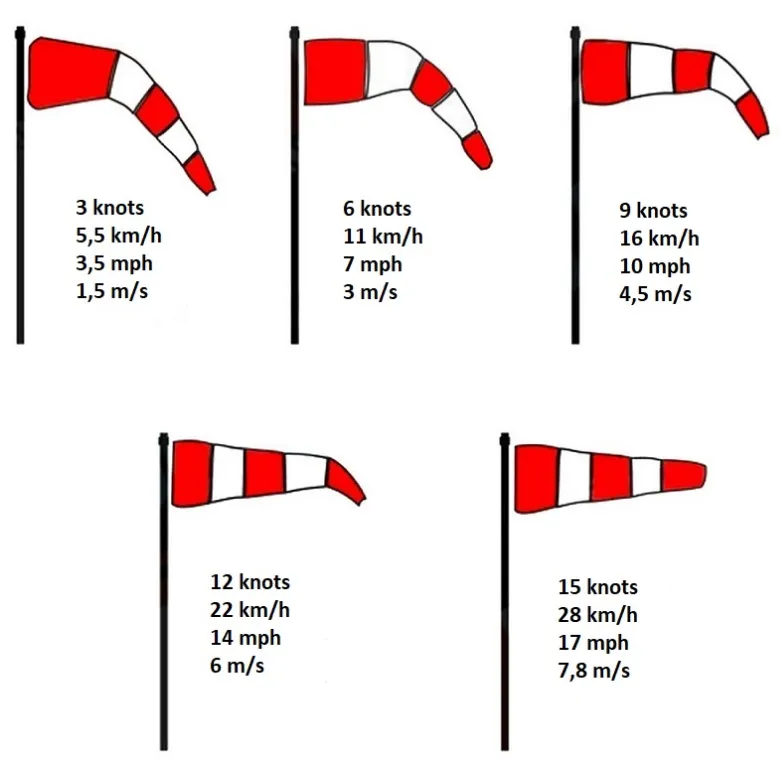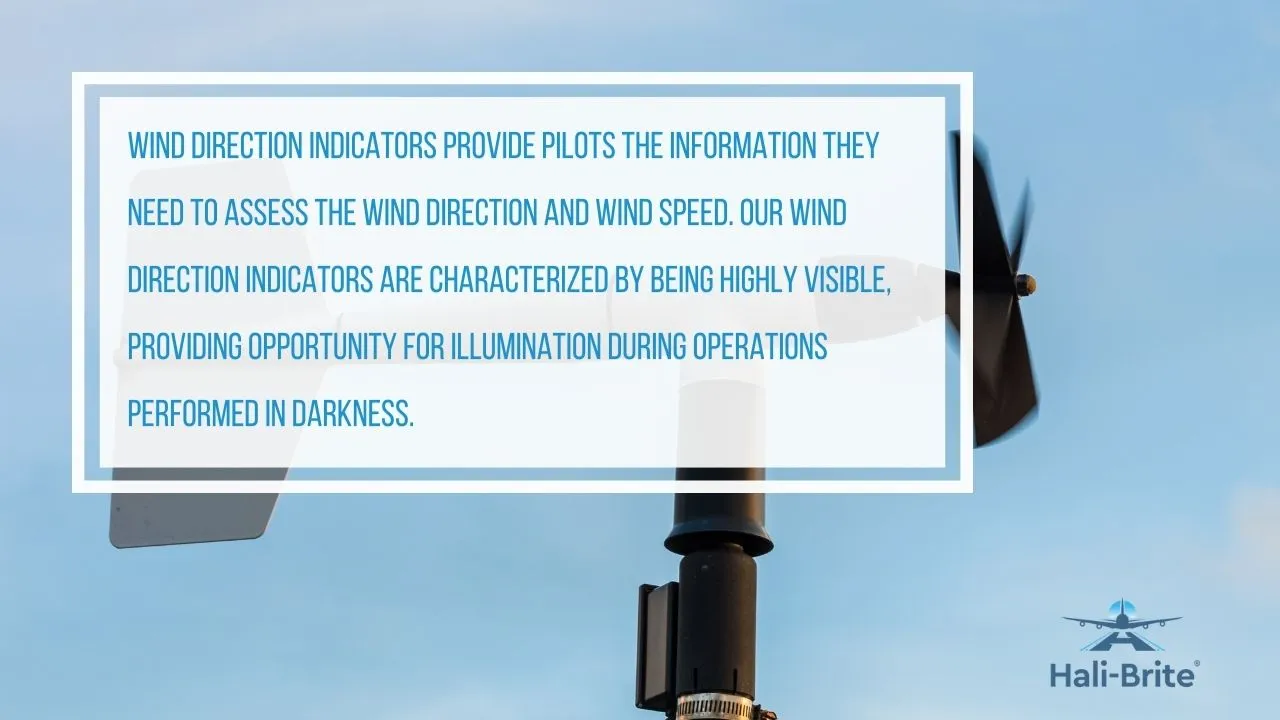In aviation, it is crucial for pilots to know the direction of the wind during flight operations. Typically, such information is provided by the Air Traffic Control (ATC). Pilots can also obtain information on wind direction from the Common Traffic Advisory Frequency (CTAF). Consequently, when these services are unavailable, pilots can utilize wind direction indicators installed in airports as a visual display of wind direction and wind speed. Knowing the wind direction and speed reduces the risk of runway excursions or other aircraft accidents.
Continue reading to learn more about wind direction indicators, their origin and history, and how they work. This article also identifies industries or facilities that use wind direction indicators besides airports.
- How Does a Wind Direction Indicator Work
- Wind Direction Indicator Origin and History
- Industries or Facilities Using Wind Direction Indicators
How Does a Wind Direction Indicator Work
In some instances, the ATC or the CTAF cannot provide information on wind direction and speed. Hence, pilots are expected to know how to calculate wind direction using aviation wind direction indicators to ensure safe take-off and landing operations.
Three types of aviation wind direction indicators can be found in airports. These wind indicators include the following:
Wind Cone
A wind cone, also known as a windsock, is a wind speed and direction indicator that provides visual information on the speed and direction of the wind. A windsock resembles a cone having a large opening where the wind enters and travels towards its smaller end.
A windsock is pointed in the opposite direction of the wind. For instance, when a wind is blowing from the North, the windsock is pointing towards the South. Moreover, a windsock has a segmented design, with each segment indicating the approximate speed of the wind.
Each segment blown horizontally adds a wind speed of three knots (or 5.5 km/h). For example, when only two segments are extended, the wind speed is approximately six knots (or 11 km/h). A fully blown windsock implies a wind speed of 15 knots (28 km/h) or more.
Tetrahedron
A tetrahedron is another aviation tool that can locate the wind direction. Tetrahedrons, however, are unable to estimate wind speed.
A tetrahedron is a triangular-shaped object mounted on a swivel, allowing it to turn freely along with the wind. Unlike a windsock, a tetrahedron points towards the direction from which the wind is coming. Thus, a tetrahedron pointing North suggests a wind blowing from the North.
Wind Tee
A wind tee, or landing tee, is a sizable T-shaped instrument used in some airports to indicate wind direction. The top of the T points to the direction from where the wind is blowing. In contrast, the bottom of the T specifies where the wind is directed. Hence, when the T appears upright, the wind comes from the opposite direction.
Wind Direction Indicator Origin and History
Windsocks originated in Japan, used during the Boys’ Day celebration to honor men in Japanese families. These Japanese windsocks, known as koinobori, were carp-shaped flags created out of paper or silk that symbolize strength and courage for every male in the household. Additionally, Romans employed windsocks as banners to distinguish military groups.
Modern windsocks were inspired by sailing ships. Sailing ships utilize wind power to push the sails, enabling the entire ship to propel forward. Since then, windsocks have evolved and are currently the widely used wind speed and direction indicator in airports and airfields.
Industries or Facilities Using Wind Direction Indicators
The Federal Aviation Administration (FAA) requires the installation of wind direction indicators in airports, especially those without an ATC, to provide pilots with visual information on wind direction. Most airports employ wind cones or windsocks as wind and speed indicators rather than tetrahedrons or wind tees.
According to the FAA standard, a windsock can be either mounted on low-mass structures (L-806) or rigid structures (L-807). The length of L-806 windsocks must be 8 feet, while L-807 windsocks can either have a length of 8 or 12 feet. White, orange or yellow are the three color options for a windsock fabric. A windsock must also be capable of fully extending when exposed to a 15 knot (28 km/h) wind speed or more. In addition, the windsock must be able to freely rotate to identify wind direction within +/- 5 degrees.
Interestingly, aviation is not the only industry to benefit from the use of wind direction indicators. Other industries and type of facilities that utilize windsocks include the following:
Chemical Industry
Chemical plant workers may experience health issues due to chemical spills, particularly those involving airborne toxic chemicals. In such situations, windsocks are employed in chemical industries to guide employees to a safe location.
Commercial Refrigeration Industry
Anhydrous ammonia is a harmful gas used as a refrigerant in commercial refrigeration facilities. Exposure to this gas due to accidental leakage can be fatal for employees. Windsocks are usually installed as part of the emergency response plan, enabling workers to avoid contact with the leaked gas.
Water Treatment Plants
Lime-based products are often used to improve water quality during water purification. However, lime dust can cause breathing problems or skin irritations. When a strong wind is present, having a windsock can help staff members take the required precautions to prevent coming into contact with lime dust.
Farms
Aerial application is frequently used to treat vast fields with crop protection agents. Compared to using ground equipment, aerial application is more practical and economical. A windsock can assist agricultural aircraft pilots during aerial application in preventing spray drift, which can be hazardous to neighboring crops and people’s health.
Aviation Wind Direction Indicators at Hali-Brite
A variety of FAA-certified Michigan wind direction indicators are available here at Hali-Brite. We offer both L-806 and L-807 types of wind cones with several options that suit your requirements. You can select between an AC- or a solar-powered wind cone with the option to add wind cone light kits to increase visibility during night flights. Feel free to get in touch with us here.



